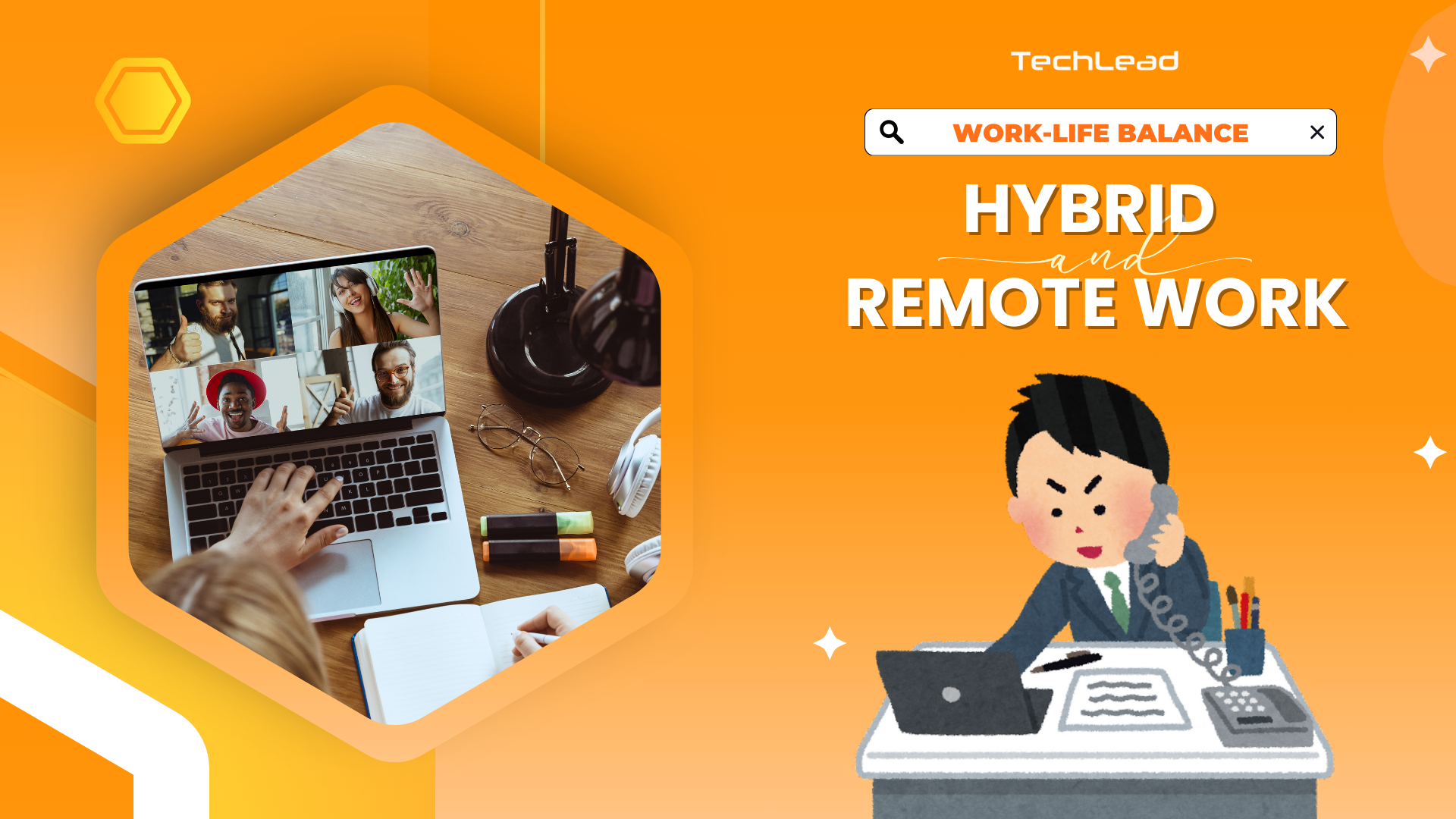The IT industry is characterized by intense workloads, tight deadlines, and the constant pressure to innovate. As a result, many professionals struggle to maintain a healthy work-life balance. With the increasing adoption of hybrid and remote work models, companies and employees alike are exploring new ways to achieve equilibrium between professional responsibilities and personal well-being. But does this shift truly offer the ideal solution, or does it introduce new challenges that must be addressed in IT hiring?

The Evolution of IT Hiring & Work-Life Balance
Traditionally, IT professionals have been associated with long hours, on-call rotations, and high-stress environments. The expectation to be constantly available has often led to burnout, reduced productivity, and job dissatisfaction. However, the digital transformation of workplaces, accelerated by the global pandemic, has changed the way IT teams operate. Remote and hybrid work models have become more prevalent, offering an alternative to the traditional office setup and reshaping IT hiring trends.
Companies in the tech industry were among the first to embrace remote work on a large scale. Many organizations found that allowing employees to work from home or offering flexible schedules led to increased job satisfaction and improved retention rates. With advances in technology, remote work is no longer limited by geographical constraints, allowing businesses to tap into a global talent pool and revolutionizing IT hiring practices.

The Advantages of Hybrid & Remote Work in IT Hiring
One of the most significant benefits of hybrid and remote work is the flexibility it provides. Employees have greater control over their schedules, enabling them to work during their most productive hours while also making time for personal commitments. This flexibility leads to higher job satisfaction and reduces stress levels, making it easier for IT professionals to maintain a work-life balance.
Productivity is another key advantage of remote and hybrid work arrangements. With fewer office distractions, employees often find it easier to focus on deep work, resulting in increased efficiency. Moreover, eliminating daily commutes saves valuable time and energy, allowing employees to start their workday feeling refreshed and ready to perform.
For companies, embracing hybrid and remote work can also lead to cost savings. By reducing the need for office space and related expenses, businesses can allocate resources to other strategic initiatives. Additionally, remote work allows organizations to hire top-tier talent from around the world, rather than being restricted to candidates within commuting distance of a physical office. This shift has made IT hiring more competitive yet more dynamic, allowing businesses to secure the best candidates for their roles.
Another significant advantage is the impact on employee well-being. Remote work enables professionals to spend more time with their families, engage in personal hobbies, and prioritize their mental and physical health. A well-balanced work-life dynamic results in happier employees who are more engaged and motivated in their roles, which in turn improves IT hiring retention rates.

Challenges of Remote & Hybrid Work in IT Hiring
While remote and hybrid work offer numerous benefits, they also introduce challenges that companies and employees must address. One of the primary concerns is communication. In a traditional office setting, spontaneous discussions, brainstorming sessions, and quick problem-solving interactions occur naturally. However, in a remote environment, teams must rely on digital tools such as Slack, Zoom, and Asana to stay connected. Without proper communication strategies, misunderstandings and delays can arise, impacting productivity and team cohesion.
Another challenge is the blurring of boundaries between work and personal life. When working from home, it can be difficult for employees to disconnect from their professional responsibilities. Many find themselves working longer hours, responding to emails late at night, or feeling pressured to be constantly available. This overextension can lead to burnout, counteracting the intended benefits of remote work.
Maintaining a strong company culture in a remote or hybrid setting is also a concern. Team bonding and engagement activities that traditionally take place in person need to be reimagined for a virtual environment. Without proactive efforts to foster a sense of belonging, employees may feel isolated or disconnected from their colleagues and the organization as a whole.
Cybersecurity risks are another critical factor to consider. With employees working from various locations and using personal networks, companies must implement robust security measures to protect sensitive data. This includes the use of VPNs, multi-factor authentication, and regular security training to mitigate potential risks.

Striking the Right Balance: What Works Best in IT Hiring?
Finding the right approach to work-life balance in IT hiring requires a tailored strategy that aligns with the needs of both the company and its employees. Many organizations have opted for a hybrid model, which combines remote work with periodic in-office collaboration. This approach allows employees to enjoy the benefits of flexibility while still maintaining a sense of connection with their colleagues.
A successful hybrid work strategy requires clear policies and expectations. Companies should establish guidelines for remote work schedules, response times, and availability to ensure that teams remain aligned. Encouraging employees to set clear work-life boundaries, such as designated work hours and scheduled breaks, can help prevent burnout and promote overall well-being.
Technology plays a crucial role in enabling effective hybrid and remote work. Businesses should invest in collaboration tools that facilitate seamless communication, project management, and workflow automation. Regular virtual check-ins, team meetings, and feedback sessions can help bridge the gap between remote and in-office employees, fostering a sense of teamwork and accountability in IT hiring.
Best Practices for Maintaining Work-Life Balance in IT Hiring
For IT professionals navigating the challenges of remote and hybrid work, implementing best practices can significantly enhance their work-life balance. Establishing a dedicated workspace at home, free from distractions, can improve focus and productivity. Setting clear boundaries between work and personal time, such as avoiding work-related tasks outside of designated hours, is essential for maintaining a healthy balance.
Employers can support their teams by promoting a culture of well-being. Encouraging employees to take regular breaks, participate in wellness programs, and engage in virtual social activities can help prevent burnout. Providing access to mental health resources and flexible scheduling options further enhances the overall work experience.
Additionally, fostering open communication within teams is key to building a supportive work environment. Managers should regularly check in with employees, provide constructive feedback, and create opportunities for professional growth. Recognizing and celebrating achievements, even in a virtual setting, reinforces a positive company culture and keeps employees motivated.
The shift towards hybrid and remote work has undeniably transformed the IT hiring landscape, offering a new perspective on work-life balance. While these models provide flexibility, productivity benefits, and access to a broader talent pool, they also introduce challenges that must be carefully managed. The key to success lies in striking a balance between autonomy, collaboration, and well-being.

Organizations that proactively address communication barriers, cybersecurity concerns, and employee engagement will be better positioned to create a thriving work environment. Similarly, IT professionals who set clear boundaries and prioritize their mental and physical health will reap the full benefits of flexible work arrangements.
So, is hybrid and remote work the ultimate solution for IT hiring? The answer depends on the unique needs of each company and its employees. By embracing a thoughtful and strategic approach, businesses can create a work culture that supports both professional success and personal fulfillment.
Are you looking to optimize your IT hiring strategies with hybrid and remote work models? Stay updated with the latest trends in IT hiring and workplace solutions by following TechLead today!
——————————————————————
TECH LEAD – Leading technology solution for you!
Hotline: 0372278262
Website: https://www.techlead.vn
Linkedin: https://www.linkedin.com/company/techlead-vn/
Fanpage: https://www.facebook.com/TechLead.vn
Email: [email protected]
Address: 4th Floor, No. 11, Nguyen Xien, Thanh Xuan, Hanoi





